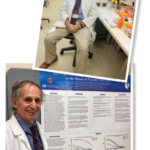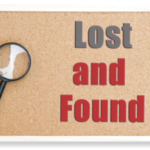
After almost 40 years in medicine, I think that I know a thing or two about drug therapy. I have treated thousands of patients, participated in clinical trials, and run a lab focused on mechanisms that can be targeted for new treatments. My bona fides should therefore be in good shape.
I like to teach and, for pedagogical purposes, have tried to distill this accumulated knowledge into clever and witty bite-sized pieces of information to enlighten and entertain my trainees. In today’s lexicon, these bullets of information would be called “teaching points” or “take-home messages” but, in reality, they are the wisdom of an elder (alas, that’s what 40 years on the job makes you).
Not afraid of self-promotion, I want to name these precepts after myself, although I am undecided whether they should be called Pisetsky’s Rules, Laws, or Maxims. Perhaps Pisetsky’s Rules sets the right tone. At this point, there are many such rules. Here are a few:
- The best way to reduce the side effects of a drug is not to prescribe it.
- Drugs come to market underdosed or overdosed. The trouble is that you don’t know which it is.
- Unless you are treating cancer, watch out for drugs that kill cells.
Of all the rules, the one which I think is the most important (and to which I fervently want my name attached in eternity) is this one: A drug becomes dangerous the moment that you think it is safe. I thought that this rule was original and important and, indeed, if respected and applied, would make the use of drugs more safe and responsible. Imagine my disappointment when I discovered that what I thought was a brand-new insight was well known and already had a name: the Peltzman Effect. Forget Pisetsky’s cardinal rule of drug therapy; Peltzman got there first.
The Peltzman Effect
The Peltzman Effect was promulgated by the economist Sam Peltzman after the work of Ralph Nader on car safety, and was a rejoinder to the idea that exposing safety defects would diminish the carnage on the highway. The common-sense notion—indeed, the foundation of Nader’s work—is the proposition that the knowledge that cars can be dangerous would spur engineering advances to boost safety. Think seat belts, airbags, and anti-lock brakes.
Is there any conceivable way that such nifty innovations could fail to make highways less treacherous places? To that question, Peltzman answered that engineering improvements regulated by law could detract from safety because people felt more secure and therefore took more risks on the road, their more rash behavior nullifying safety benefits. If I think that my brakes can stop my car on a dime, I may put the pedal to the metal or drive on slick icy roads as if they were dry pavement. Or, knowing that I am surrounded by a protective cushion of airbags that can poof instantaneously with the slightest jar, I may text a message while cruising down U.S. Interstate 95 at 70 miles an hour.


